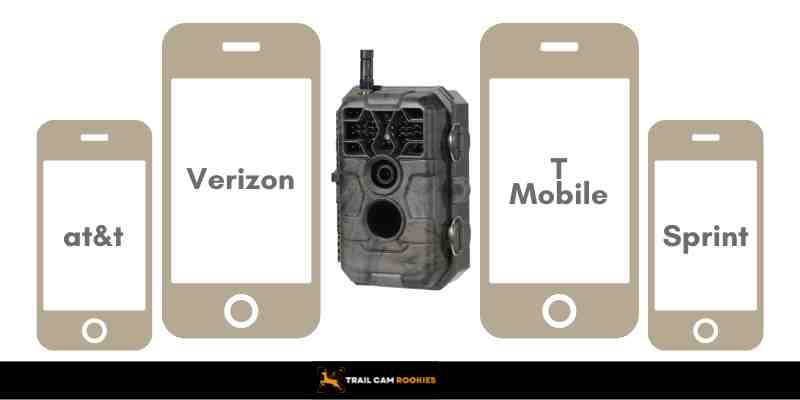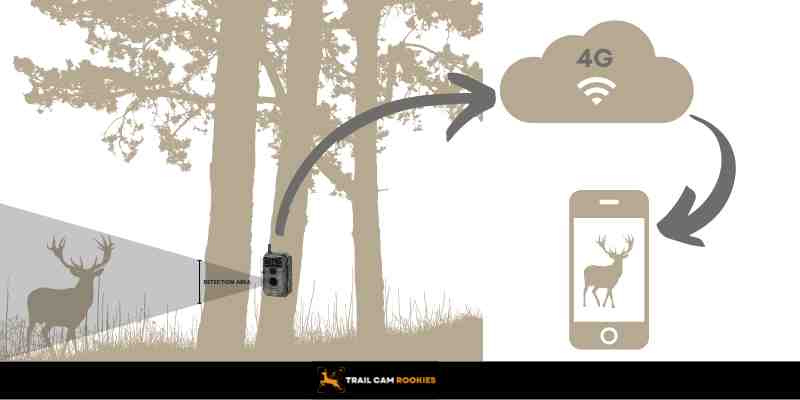Understanding How Cellular Trail Cameras Work for Better Wildlife Monitoring
Cellular trail cameras are innovative devices that enhance wildlife monitoring by providing real-time data transmission. These cameras use cellular networks to instantly send images or videos captured in the field, eliminating the need for manual retrieval common with traditional trail cameras.
In this article, we will explore how cellular trail cameras work, including their parts, how they send data, their advantages, and advice on selecting the best one for your requirements. Knowing these things will help you make smart choices and improve your experience of watching wildlife.
1. What are Cellular Trail Cameras?
Cellular trail cameras are advanced remote devices designed to transmit images and videos via cellular networks. Unlike traditional trail cameras, these modern devices eliminate the need for manual retrieval of footage.
Key Differences from Traditional Trail Cameras
- Real-time Data Transmission: Cellular trail cameras send captured images instantly to your smartphone or email.
- Remote Access: Users can monitor wildlife activities without physically visiting the camera location.
- Simplicity: No need to disturb the area by checking memory cards or batteries frequently.
2. Core Components of Cellular Trail Cameras
Cellular trail cameras consist of several essential hardware components that enhance their functionality and performance. Understanding these elements helps users select the best trail camera for their needs.
Camera Sensor Specifications
- Megapixels: This determines the image quality. Higher megapixels capture more detail.
- Night Vision Technology: Options include infrared and no-glow LEDs. Infrared capabilities allow for clear images in low light conditions without disturbing wildlife.
Cellular Modem Compatibility
- 4G/LTE Support: Most cellular trail cameras utilize 4G networks for faster data transmission.
- Future-Proofing with 5G: Some newer models may offer compatibility with upcoming 5G networks, improving speed and connectivity.

SIM Card Slots
- A SIM card slot enables cellular connectivity.
- Users should confirm carrier compatibility, such as AT&T or Verizon. A compatible carrier ensures reliable data transmission.
Power Sources
Powering a cellular trail camera is crucial for its operation:
- Batteries: Many models use standard batteries which require periodic replacements.
- Solar Panels: These provide a sustainable option, allowing continuous use without frequent battery changes.
Memory Storage Options
Storage choices impact how many images or videos a camera can hold:
- SD Cards: Traditional storage method allowing users to review footage directly from the card.
- Cloud Storage: Some modern cellular game cameras offer cloud options, enabling remote access to recorded data.
Familiarity with these core components enhances your understanding of how cellular trail cameras operate. They combine advanced technology with convenience, making them a valuable tool for wildlife monitoring and security applications.
3. How Cellular Trail Cameras Transmit Data
Cellular trail cameras use a step-by-step process to capture and send images or videos efficiently. Here’s how it works:

- Motion Activation: When an animal moves within the camera’s view, built-in sensors detect this motion and activate the camera.
- Triggering the Camera: Motion sensors activate the camera, prompting it to take pictures or record video.
- Image/Video Capture: The camera captures high-quality images or videos based on its specifications, such as megapixels and infrared capabilities.
- Data Compression: Before transmission, cellular trail cameras apply data compression techniques. This reduces file sizes without significantly compromising quality, ensuring faster upload times.
- Encryption Process: Security is crucial in data transfer. Cameras encrypt captured files, protecting them from unauthorized access during transmission.
- Transmission via Cellular Networks: Once compressed and encrypted, the data is sent through cellular networks (GSM/CDMA). The camera connects to a cellular network using a SIM card compatible with service providers like AT&T or Verizon.
This entire process allows for real-time delivery of images or videos to your device.
With this technology, you can enjoy seamless connectivity without needing to retrieve footage manually.
4. Benefits of Cellular Trail Cameras for Wildlife Monitoring
Cellular trail cameras offer distinct advantages over traditional ones, particularly in wildlife monitoring.
1. Real-Time Alerts for Hunters
Cellular trail cameras provide instant notifications about animal movements. This capability allows hunters to adjust their plans quickly, optimizing their chances of a successful outing.
A hunter can set up a camera near a feeder and receive alerts when big bucks approach. Instant information leads to better decisions in the field.
2. Minimized Disturbance for Wildlife Managers
Wildlife managers gain valuable insights without disrupting animal behavior. Cellular cameras allow for continuous observation of patterns, helping in conservation efforts and population studies. Managers can monitor migration routes or nesting sites while maintaining a safe distance. This unobtrusive method preserves natural habitats during data collection.
5. Choosing the Right Cellular Trail Camera for Your Needs
Selecting the right cellular trail camera requires careful consideration of several key factors. This ensures that you choose a model that meets your specific needs, whether for hunting or security purposes.
- Battery Life: A crucial aspect to evaluate. Longer battery life reduces the frequency of replacements and enhances monitoring periods.
- Image Quality: Look for cameras with higher megapixel counts and superior night vision technology. This ensures clear images or videos, especially in low-light conditions.
- Data Plan Compatibility: Some cameras require specific cellular network plans. Ensure compatibility with your preferred carrier like AT&T or Verizon.
- Field of View: A wider field allows for better coverage of the monitored area. This is particularly important in dynamic wildlife environments.
- Durability and Weather Resistance: Choose models built to withstand various environmental conditions. Rugged designs protect against elements like rain and snow.
Take these factors into account when deciding on a cellular trail camera
Also Read > The 5 Best Cellular Trail Cameras for for Every Outdoorsman
6. Installing and Maintaining Your Cellular Trail Camera Effectively
Installing a cellular trail camera correctly is crucial for capturing quality images and videos. Here’s a step-by-step guide for optimal performance during wildlife monitoring missions.
1. Choose the Right Location
- Look for areas with animal activity.
- Position the camera near feeders, trails, or water sources.
Also Read > How to Position Your Trail Camera for the Best Shots, Every Time
2. Mounting the Camera
- Use a sturdy mount or strap to secure the camera to a tree or pole.
- Ensure the camera is at eye level to capture clear images.
3. Adjust Camera Settings
- Set the desired resolution for images or videos.
- Adjust detection sensitivity based on surrounding movements.
4. Check Cellular Signal
- Verify that your location has adequate cellular signal strength.
- Test connectivity by sending a test image before finalizing the setup.
5. Regular Maintenance
- Periodically check battery life and replace as needed.
- Clean the lens and sensor to prevent dirt buildup affecting image quality.
Each step contributes to capturing those precious moments without disruption, allowing for a deeper connection with nature.
Conclusion: Embracing the Future of Wildlife Monitoring with Cellular Trail Cameras
The evolution of cellular trail cameras signifies a monumental shift in wildlife monitoring. These devices utilize advanced cellular connectivity to provide real-time insights into animal behavior, making them essential tools for hunters and wildlife researchers.
As the demand for effective wildlife monitoring increases, investing in a reliable cellular game camera can transform your scouting efforts. These modern tools not only capture images but also deliver critical information without disrupting natural habitats.


